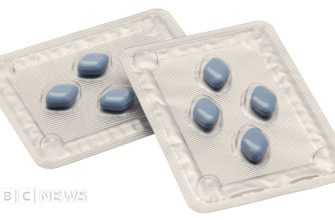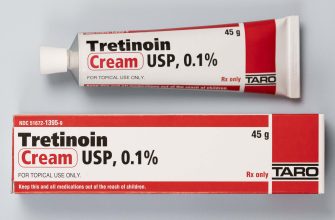If you’re seeking a more affordable option for treating erectile dysfunction, you’ll be happy to learn about generic Viagra. The FDA’s approval process for these medications ensures they contain the same active ingredient, sildenafil citrate, as the brand-name drug and work in the same way. We break down what this FDA stamp actually signifies.
Think of it this way: when a pharmaceutical company’s patent on a medication expires, other manufacturers can produce their own versions. Before they can sell these generics, they must demonstrate to the FDA that their version is bioequivalent. This means the generic drug releases the same amount of active ingredient into your bloodstream over the same period of time as the original. The FDA requires rigorous testing to confirm this.
Remember, while generic Viagra provides a cost-effective alternative, it’s still vital to discuss its use with your doctor. They can assess your overall health, consider any existing medications you’re taking, and determine if sildenafil citrate is suitable for you. Furthermore, obtaining a prescription from a licensed healthcare provider guarantees you’re receiving a safe and legitimate product from a regulated pharmacy.
- Generic Viagra: Understanding FDA Approval
- How the FDA Approves Generic Drugs
- Ensuring Safety and Efficacy
- What “Generic Viagra” Actually Means?
- Key Differences Between Brand-Name and Generic
- Ensuring Quality and Safety
- Is My Generic Sildenafil FDA-Approved?
- How to Spot Potential Red Flags
- Ask Your Pharmacist
- How to Verify FDA Approval for Generic Drugs
- Risks of Using Non-FDA Approved Medications
- Safe and Legal Ways to Obtain Generic Viagra
Generic Viagra: Understanding FDA Approval
To confirm that a generic Viagra product is safe and effective, always check for FDA approval. The FDA approval process verifies the generic medication contains the same active ingredient (sildenafil citrate), strength, dosage form, and route of administration as the brand-name drug, Viagra.
How the FDA Approves Generic Drugs
The FDA requires generic drug manufacturers to submit an Abbreviated New Drug Application (ANDA). This application demonstrates bioequivalence, proving the generic medication performs in the same way as Viagra in the body. Bioequivalence studies compare how the generic drug is absorbed into the bloodstream compared to the brand-name drug. The FDA assesses manufacturing processes to guarantee quality and consistency.
Ensuring Safety and Efficacy
A generic Viagra must meet the same high standards of quality and manufacturing as the original medication. Look for the FDA’s “Approved Drug Products with Therapeutic Equivalence Evaluations,” commonly known as the Orange Book, to confirm a specific generic drug is approved. Purchasing generic medications from licensed pharmacies reduces the risk of obtaining counterfeit or substandard products, protecting your health.
What “Generic Viagra” Actually Means?
A “Generic Viagra” product contains sildenafil citrate, the same active ingredient as brand-name Viagra. Drug manufacturers can produce generic versions after the patent on the original medication expires. This competition typically results in a significant price reduction compared to Viagra.
Key Differences Between Brand-Name and Generic
The most significant difference between Viagra and generic sildenafil is the price. Generic versions can cost considerably less, making treatment more accessible. They have the same active ingredient, dosage, safety profile, strength, method of administration, and intended use. However, inactive ingredients, such as coloring or fillers, might differ.
Ensuring Quality and Safety
Pay close attention to the source of your generic sildenafil. Look for pharmacies that require a prescription and are licensed. Reputable online pharmacies often display their credentials. Before purchasing, verify that the generic medication has FDA approval. FDA approval indicates the drug has met rigorous safety and efficacy standards. Ask your doctor or pharmacist if you have concerns about a specific brand or supplier.
Is My Generic Sildenafil FDA-Approved?
Check the label carefully! Your generic sildenafil must state it’s manufactured by an FDA-approved facility. This approval ensures the manufacturing process meets specific quality and safety standards. Look for an “FDA-approved” designation or a clearly stated manufacturing location within the United States or another country with comparable regulatory oversight.
Another way to verify FDA approval is by searching the FDA’s database of approved drugs. Use the National Drug Code (NDC) usually found on the packaging. Enter the NDC on the FDA’s website to see if your specific sildenafil product is listed as approved. This confirmation confirms that the version you hold has completed the agency’s evaluation.
How to Spot Potential Red Flags
Be wary of suspiciously low prices. If the price seems too good to be true, it might signal a counterfeit or substandard product that hasn’t undergone FDA scrutiny. Generic medications are usually less expensive than brand-name drugs, but drastic discounts should trigger caution.
Always purchase from a reputable pharmacy. Licensed pharmacies are accountable and adhere to regulations regarding the sourcing and dispensing of medications. Avoid buying from unverified online sources or locations without proper credentials. Your doctor or pharmacist can guide you to reliable suppliers.
Ask Your Pharmacist
When in doubt, directly ask your pharmacist! They can confirm the source and legitimacy of your generic sildenafil. They possess the knowledge and resources to verify FDA approval, ensuring you’re getting a safe and genuine medication. Share the product’s packaging information with your pharmacist, and they will assist you.
How to Verify FDA Approval for Generic Drugs
Confirm a generic drug’s FDA approval by using the agency’s official resources. Check the FDA’s Orange Book, formally known as “Approved Drug Products with Therapeutic Equivalence Evaluations.” It lists approved drugs and indicates therapeutic equivalence.
- Search the Orange Book: Go to the FDA’s website and search for “Orange Book.” You can search by active ingredient, proprietary name (brand name), or applicant holder.
- Look for an “Approved” Rating: The Orange Book assigns codes indicating therapeutic equivalence. An “A” rating generally signifies that the FDA considers the generic drug therapeutically equivalent to the brand-name drug.
- Review the Product Labeling: Check the drug’s label. It should clearly state the manufacturer and include an NDC (National Drug Code) number. You can then verify the NDC number against the FDA’s National Drug Code Directory.
If you need additional verification, you can use the FDA’s Drugs@FDA database. This database contains information on approved drugs dating back many years.
- Access Drugs@FDA: Find this tool on the FDA website.
- Enter the Drug Name: Search for the specific generic drug name.
- Examine Approval History: Review the approval documents and supplemental information to ensure the drug has been approved by the FDA.
Contact the FDA directly if you have remaining questions or concerns. You can reach them through their website or by phone.
Risks of Using Non-FDA Approved Medications
Always choose medications approved by the FDA. Products lacking FDA approval bypass rigorous testing, increasing your exposure to serious health threats. Unapproved drugs may contain incorrect dosages of active ingredients. Inconsistent strength can lead to under-treatment of your condition or dangerous overdoses.
Beyond dosage issues, unapproved medications might include harmful contaminants. Manufacturing processes that do not adhere to strict quality control can introduce toxic substances. These impurities create unpredictable side effects and compromise your well-being.
Substandard medications often feature inaccurate or incomplete labeling. This makes it difficult to understand correct usage, potential side effects, and contraindications. You could inadvertently take medication that interacts negatively with existing conditions or other drugs you’re using.
Protect yourself by verifying the FDA approval of any medication before use. Look for an FDA logo or NDC (National Drug Code) number. If you have doubts, consult your pharmacist or doctor for guidance. Choosing only FDA-approved medications safeguard your health and ensures you receive safe and reliable treatments.
Safe and Legal Ways to Obtain Generic Viagra
Obtain generic Viagra (sildenafil) safely by consulting a licensed healthcare provider. They assess your medical history, current medications, and potential risks before prescribing.
Secure a valid prescription from your doctor. A prescription ensures you receive the correct dosage and avoid potentially harmful drug interactions.
Purchase generic Viagra only from reputable pharmacies, both brick-and-mortar and online. Verify the pharmacy’s credentials and licensing through your state’s board of pharmacy website. Look for the Verified Internet Pharmacy Practice Sites (VIPPS) seal, indicating compliance with safety standards.
Compare prices across different pharmacies, but be wary of significantly discounted prices, which could indicate counterfeit or substandard medications. Stick to established pharmacies with transparent pricing policies.
Consider telehealth options. Many online platforms connect you with licensed doctors who can evaluate your suitability for sildenafil and issue a prescription if appropriate, all from the convenience of your home. Verify the platform’s credentials and doctor’s qualifications before using their services.
Check the medication’s packaging and appearance upon receipt. Ensure it matches the description provided by the pharmacy and look for any signs of tampering or damage. Contact the pharmacy immediately if you have concerns.
| Safe Source | Key Feature | Things to Look For |
|---|---|---|
| Licensed Doctor | Medical Evaluation | Proper credentials, board certification |
| Reputable Pharmacy | Valid Prescription Required | VIPPS seal, secure website |
| Telehealth Platform | Remote Consultation | Licensed doctors, secure data transmission |
Report any adverse effects or suspicious medication to your doctor and the FDA’s MedWatch program. Reporting helps monitor drug safety and prevent the distribution of counterfeit medications.






